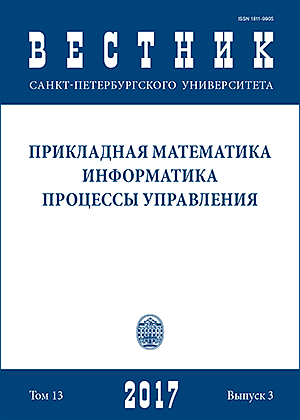Application of improved isochron method in ship’s minimum voyage time weather routing
DOI:
https://doi.org/10.21638/11701/spbu10.2017.306Abstract
Optimal control theory is the core of modern control theory. The development of control theory comes from the requirements of the control object. With the continuous progress of social science and technology, optimal control theory is widely used for such issues as the minimum time problem, the minimum energy consumption problem, the linear quadratic index optimal problem, and others. In this paper, a method of calculating the minimum time route of the ship using rhumb lines combined with isochrones is proposed. Firstly, a mathematical model of the minimum time route is constructed and the ship motion equation is discretized. Secondly, the distance between the starting point and the end point is divided into several rhumb segments with equal traveling time so that each isochrone corresponds to different rhumb line. Then, N parallel lines of equal spacing ΔD are arranged on both sides of each rhumb segment to form 2N sub-channels. Stipulate that the ship can only sail within the interval of 2N × ΔD and constrain the navigation area in order to find the optimal solution faster. At each unit of discrete time the course of the ship remains constant. Select the optimal arrival points on each sub-lane interval in the same time to form the local optimal isochrone. After calculating the minimum time of the ship’s voyage, the minimum time route is derived using step-by-step recursion. In addition, in order to improve the obstacle avoidance capability of the improved isochrone method, the paper also proposes the algorithm based on a bitmap image in order to avoid a danger zone which may be encountered in the course of navigation, so as to ensure the safe navigation of the ship at sea. Finally, the improved isochrone method is applied to the problem of the minimum time route of the ship under meteorological conditions. The simulation results in MATLAB show that the algorithm can not only find the minimum time route from the starting point to the end point and ensure the route is relatively short, but also avoid dangerous areas encountered in the course of navigation in time and assure safety of navigation. Refs 16. Figs 9.
Keywords:
improved isochrone method, meteorological navigation, route optimization, algorithm of avoiding the danger zone
Downloads
References
References
Downloads
Published
How to Cite
Issue
Section
License
Articles of "Vestnik of Saint Petersburg University. Applied Mathematics. Computer Science. Control Processes" are open access distributed under the terms of the License Agreement with Saint Petersburg State University, which permits to the authors unrestricted distribution and self-archiving free of charge.





